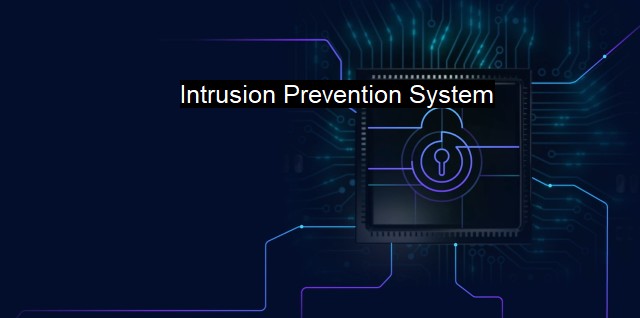What is Intrusion Prevention System?
Securing Networks: The Important Role of Intrusion Prevention Systems (IPS) Against Malicious Activities and Attacks
An Intrusion Prevention System (IPS) is one of the essential hardware or software tools used within the universe of cybersecurity. It forms a critical line of defense in a layered security strategy, helping organizations shield their networks and systems against a wide array of potential cyber threats. As the name suggests, rather than solely identifying and reporting a cyber threat, an IPS is designed and deployed to effectively deter and prevent potential cyber intrusions.Typically, an IPS functions as a network security and threat protection mechanism that scrutinizes all network traffic flows to detect and shield the system from unwanted or unsafe behaviors and vulnerabilities such as viruses, malicious exploits, worms, system invasive attempts, and other forms of evil software. It is particularly instrumental in averting blended attacks and threats that may exploit multiple vulnerabilities.
The mechanism operates behind the principle of real-time prevention, aiming at instantaneous interception, analysis and subsequent flash responses to threats. The idea is to take immediate proactive measures during a potential invasion circumstance, thus helping to maintain the system's health and business continuity by essentially protecting the integrity, availability, and confidentiality of pertinent data and information.
Reliant on predefined security policies, an IPS identifies suspicious activities, logs pertinent information about such, attempts to stop the action, and eventually reports it. It encapsulates signature-based threat detection, monitoring, logging, and other illustrating reports of scanned traffic, and risk correlation services which enhance its ability to prevent possible cyber menaces.
A remarkable characteristic about Intrusion Prevention Systems is their ability to differentiate between legitimate and illegitimate traffic, hence aiding to mitigate false positives. This is chiefly beneficial to businesses because it facilitates the fluid flow of non-malignant traffic, which bodes well for the business's productivity.
When integrated with other cybersecurity strategies and technologies like firewalls and antivirus software, an IPS offers comprehensive security cover. While Antivirus software is essential in blocking malicious programs that might already have made their way into the computer systems, IPS offers an extra layer that also helps in going after zero-day exploits and other sorts of attacks that antivirus software might not be able to detect or combat.
The constant metamorphosis in cyber threat tactics demands the use of next-generation intrusion prevention systems, which have the competency to identify and prevent advanced threats. These use the power of machine learning and artificial intelligence to analyze behaviors and identify potential threats continually.
Intrusion Prevention Systems straddle various types like network-based, wireless, network behavior analysis intrusion prevention systems amongst others. Each kind is instrumental in prevention according to its specialization scope. For instance, network-based intrusion prevention system (NIPS) monitors the entire network for suspicious traffic by analyzing protocol activity.
Intrusion prevention systems weave a powerful narrative within any comprehensive cybersecurity strategy. Incorporating them along with other cybersecurity mechanisms will help organizations in maintaining the sanctity of their network and achieve a robust protective shield against all forms of rising cyber threats. Acquiring, installing and regularly updating an IPS system is therefore strongly recommended to prevent unwanted intrusions, bolstering the security, resilience, and hence business integrity and continuity. They are indeed an invaluable defense aid within today's ever-complex and unpredictable digital threat landscape while antivirus and firewall technology continue to serve their protective roles against known threats. Using all these tactics and tools in unison remains a reliable method to ensure maximum capacity protection against melee of cyber threats.

Intrusion Prevention System FAQs
What is an intrusion prevention system (IPS)?
An intrusion prevention system (IPS) is a cybersecurity tool that aims to protect network devices from potential attacks. It monitors and analyzes network traffic to detect and block suspicious or malicious activity in real-time. An IPS can be hardware-based, software-based, or a combination of both.What is the difference between an IPS and antivirus software?
Antivirus software detects and removes malware that has already infected a device, while an intrusion prevention system (IPS) aims to prevent malware from entering the network in the first place by monitoring and analyzing network traffic. An IPS is considered a more proactive approach to cybersecurity than antivirus software.How does an IPS work?
An intrusion prevention system (IPS) uses a variety of techniques to detect and prevent potential attacks. It can use signature-based detection, where it compares network traffic against a database of known malicious signatures. It can also use behavior-based detection, where it analyzes network traffic for abnormal patterns that may indicate an attack. Additionally, an IPS can use anomaly-based detection, where it learns the normal patterns of network traffic and alerts administrators if it detects any abnormal activity.What are the benefits of using an IPS?
The benefits of using an intrusion prevention system (IPS) include improved network security, reduced risk of data breaches, and enhanced visibility into network activity. IPS can also help organizations comply with regulatory requirements for network security. Additionally, by reducing the likelihood of successful cyber attacks, an IPS can help save organizations the cost of recovering from a successful breach.| | A | | | B | | | C | | | D | | | E | | | F | | | G | | | H | | | I | | | J | | | K | | | L | | | M | |
| | N | | | O | | | P | | | Q | | | R | | | S | | | T | | | U | | | V | | | W | | | X | | | Y | | | Z | |
| | 1 | | | 2 | | | 3 | | | 4 | | | 7 | | | 8 | | |||||||